市场资讯及洞察

Multi-Timeframe (MTF) analysis is not just about checking the trend on the daily before trading on the hourly; ideally, it involves examining and aligning context, structure, and timing so that every trade is placed with purpose.
When done correctly, MTF analysis can filter market noise, may help with timing of entry, and assist you in trading with the trending “tide,” not against it.
Why Multi-Timeframe Analysis Matters
Every setup exists within a larger market story, and that story may often define the probability of a successful trade outcome.
Single-timeframe trading leads to the trading equivalent of tunnel vision, where the series of candles in front of you dominate your thinking, even though the broader trend might be shifting.
The most common reason traders may struggle is a false confidence based on a belief they are applying MTF analysis, but in truth, it’s often an ad-hoc, glance, not a structured process.
When signals conflict, doubt creeps in, and traders hesitate, entering too late or exiting too early.
A systematic MTF process restores clarity, allowing you to execute with more conviction and consistency, potentially offering improved trading outcomes and providing some objective evidence as to how well your system is working.
Building Your Timeframe Hierarchy
Like many effective trading approaches, the foundation of a good MTF framework lies in simplicity. The more complex an approach, the less likely it is to be followed fully and the more likely it may impede a potential opportunity.
Three timeframes are usually enough to capture the full picture without cluttering up your chart’s technical picture with enough information to avoid potential contradiction in action.
Each timeframe tells a different part of the story — you want the whole book, not just a single chapter.

Scalpers might work on H1-M15-M5, while longer-term traders might prefer H4-H1-H15.
The key is consistency in approach to build a critical mass of trades that can provide evidence for evaluation.
When all three timeframes align, the probability of at least an initial move in your desired direction may increase.
An MTF breakout will attract traders whose preference for primary timeframe may be M15 AND hourly, AND 4-hourly, so increasing potential momentum in the move simply because more traders are looking at the same breakout than if it occurred on a single timeframe only.
Applying MTF Analysis
A robust system is built on clear, unambiguous statements within your trading plan.
Ideally, you should define what each timeframe contributes to your decision-making process:
- Trend confirmed
- Structure validated
- Entry trigger aligned
- Risk parameters clear
When you enter on a lower timeframe, you are gaining some conviction from the higher one. Use the lower timeframe for fine-tuning and risk control, but if the higher timeframe flips direction, your bias must flip too.
Your original trading idea can be questioned and a decision made accordingly as to whether it is a good decision to stay in the trade or, as a minimum action, trail a stop loss to lock in any gains made to date.
Putting MTF into Action
So, if the goal is to embed MTF logic into your trade decisions, some step-by-step guidance may be useful on how to make this happen
1. Define Your Timeframe Stack
Decide which three timeframes form your trading style-aligned approach.
The key here is that as a starting point, you must “plant your flag” in one set, stick to it and measure to see how well or otherwise it works.
Through doing this, you can refine based on evidence in the future.
One tip I have heard some traders suggest is that the middle timeframe should be at least two times your primary timeframe, and the slowest timeframe at least four times.
2. Build and Use a Checklist
Codify your MTF logic into a repeatable routine of questions to ask, particularly in the early stages of implementing this as you develop your new habit.
Your checklist might include:
- Is the higher-timeframe trend aligned?
- Is the structure supportive?
- Do I have a valid trigger?
- Is risk clearly defined?
This turns MTF from a concept into a practical set of steps that are clear and easy to action.
3. Consider Integrating MTF Into Open Trade Management
MTF isn’t just for entries; it can also be used as part of your exit decision-making.
If your higher timeframe begins showing early signs of reversal, that’s a prompt to exit altogether, scale out through a partial close or tighten stops.
By managing trades through the same multi-timeframe approach that you used to enter, you maintain logical consistency across the entire lifecycle of the trade.
Final Action
Start small. Choose one instrument, one timeframe set, and one strategy to apply it to.
Observe the clarity it adds to your decisions and outcomes. Once you see a positive impact, you have evidence that it may be worth rolling out across other trading strategies you use in your portfolio.
Final Thought
Multi-Timeframe Analysis is not a trading strategy on its own. It is a worthwhile consideration in ALL strategies.
It offers a wider lens through which you see the market’s true structure and potential strength of conviction.
Through aligning context, structure, and execution, you move from chasing an individual group of candles to trading with a more robust support for a decision.
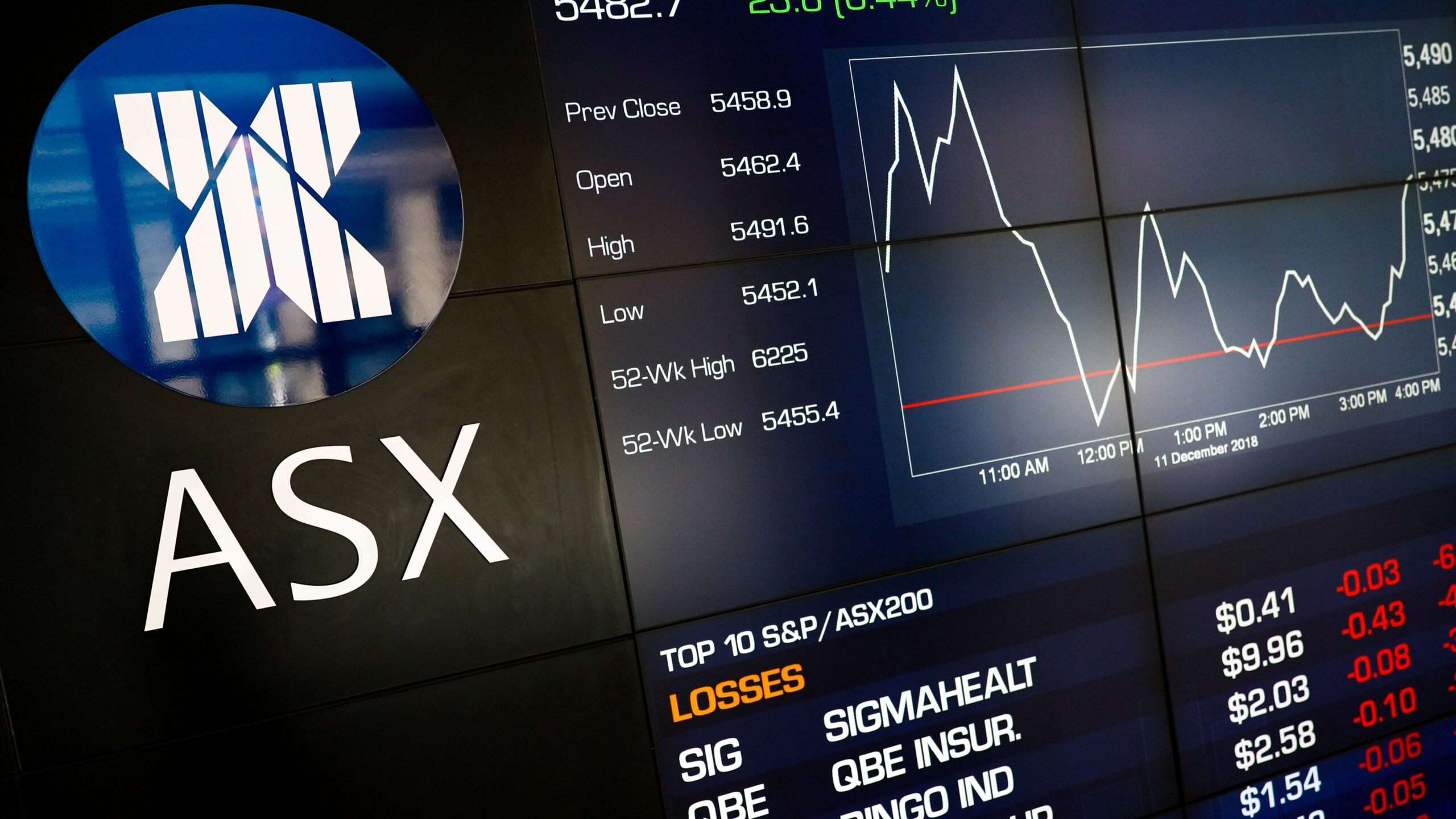

热门话题
相信最近不论大家看的是中文还是英文媒体,在澳洲当地我们接收到的信息基本上似乎都是:利息很高,近期降息无望,物价还是压不下去,失业率在缓慢上涨,餐馆消费疲软,小企业倒闭,等等。然后每个月还定期发布一些继续让你觉得不行了的信息,比如,澳洲的经济数据GDP继续很低,各大高校限制留学生,澳洲取消188商业移民签证。如果你不出门,光看新闻的话,一定感觉澳洲现在是水生火热,民不聊生。虽然还不至于这么惨,但是肯定要比2021-2022那时候超低利息时的疯狂情况要冷静了许多。

但是即使各种经济负面新闻满天飞,依然有一条事实很清楚:澳洲股市在本周一再创新高,澳洲200指数达到了8130的高点。这到底是怎么回事?经济这么差?就业这么差?物价这么高?怎么股市还创新高了?这不符合逻辑啊。别急,今天我们就来当一回马后炮,来岁表扯一扯,为啥经济看上去这么差,股市还能创新高。首先我要说一下,接下来的分析和推断只是我自己瞎猜的,有可能完全是错的,但是至少我愿意表达我的观点,如果你觉得不对,那完全是有可能的~在所有的胡扯之前,我需要给大家简单普及一下两个不同:所有的经济数据,都是滞后的,也就是发布的都是之前1个月,或之前1个季度的情况,并不意味着现在或未来。然而股市呢,却完全相反,股价代表的是投资者对于这个板块,这个公司未来的预期,并非现在的情况。所以根据上面的逻辑,我们得出:1. 代表之前的经济数据不好2. 代表未来预期的股价却又很高所以结论就是:投资者认为,推测,猜测:未来的情况会比现在好。未来的股价还会更高,要不然为啥现在买入?那我们继续猜:投资者凭什么会觉得澳洲股市未来股价还会更高呢?我也不知道人们心里怎么想,所以我说就是猜么。我的猜测是:1. 美国这周四会第一次开始降息,说明美元的降息周期正式开启,给与世界经济信心。2. 澳洲的通胀逐步得到控制,加上目前依然相对强劲的就业和经济,使得澳洲在不需要降息的情况下也能硬抗高利息带来的伤害。

当然,更为关键的是,我们知道澳洲最大的几个板块分别是:比重最大的金融银行板块,和第二大的矿业板块,还有之后的消费,电信和交通。这几个版块里,除了矿业我本人长期也并不看好以外,其余的行业都将会受益于美国开始的降息。尤其是银行板块。这么说,澳洲的银行,其用来贷款的资金最大部分不是来自于澳洲自己的储户,而是来自于国际债券市场,比如去美国发债,去日本发债来融资。由于澳洲银行有着极高的信用评级,因此可以用非常低的成本借到很多钱。而随着美元的降息,澳洲银行去美国降息的成本也将会降低,而贷款给澳洲客户的利息一时半会儿又不会变,大约有6个月的时间差,因此澳洲银行就会享受到有6个月时间,融资成本降低,但是贷出去的利率不变的情况,变相的,这些金融机构的毛利润就会有至少6个月的时间几乎白嫖高出一块。为什么说6个月?因为是基于了澳洲加息时比美国晚6个月,现在澳洲央行行长又给出了明确的6个月内不会降息的发言,因此我们推测,澳洲即使要降息,也会在美国动手6个月之后开始。其实今天我想说的是,如果我们只看当下的经济数据,也许你会感觉澳洲水深火热。其实并没有这么差。尤其是失业率来说,目前的失业率只有4.2%,几乎依然接近于经济学里的完全就业状态。虽然有人会说,就算一周工作2小时也算。是的,但是2019年也是这个规则,可当年的失业率可是远超4.2%,甚至于过去10年,平均值也远高于4.2%。
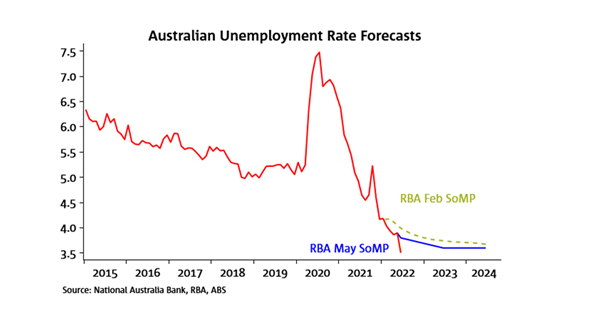
澳洲的失业率这么低,说明就业市场依然缺人,但是既然这么多人工作,但是创造出来的GDP一个季度只有高了那么0.2%,那说明什么?说明每个工作的人平均的产出比以前更低。说明生产效率更低,这才是问题的关键。普通就业很缺人,高端职位很难申请,GDP增长缓慢,最低工资继续创新高,所有这些加起来,得出的就是:澳洲的国家竞争力在不断下降。除了某些领域因为有垄断优势而可以立足于世,例如矿业。但是相对于其他国家来说,用更低的成本,产生更高的收益,才会吸引外资,才会吸引制造业,才会吸引本地小老板们去创业。这才是澳洲所需要改变的。可惜,短时间,我说的是5年10年内我估计是看不到。回到正题:澳洲股市迎来新高,说明的是投资者对于股市未来的信心,从侧面也是对于经济的信心。所以,如果代表着前瞻性的股市能创新高,其实是个不错的信号。免责声明:GO Markets 分析师或外部发言人提供的信息基于其独立分析或个人经验。所表达的观点或交易风格仅代表其个人;并不代表 GO Markets 的观点或立场联系方式:墨尔本 03 8658 0603悉尼 02 9188 0418中国地区(中文) 400 120 8537中国地区(英文) +248 4 671 903作者:
Mike Huang | GO Markets 销售总监


热门话题
美国刚刚落地的CPI和PPI均超预期回落,生生把暴跌超今年单周记录的标普和纳指拉涨到超今年单周涨幅记录。本周作为央行周,美联储预计在转向货币紧缩政策两年多后首次降息,货币政策由此转向,目前FedWatch预计降息25个基点还是50个基点均为50%,为后半周美股走向埋下大炸弹。由这份预计概率看出,向来预测精准无误的FedWatch本次不愿意背锅了,五五开的预计怎么都不会错。然而这却对市场造成了极大的隐患,给不到明确降息预期就等于市场无法提前消化降息影响。美国作为世界第一大经济体,美国的利率决议不仅影响着股市走向,更影响着美元连带的外汇,黄金,原油,国债还有大宗商品期货价格的走向。

因此我们说美股本周将迎来大考,原来预期降息25个基点,市场也消化了本次降息25个基点的预期,若美联储真降息25个基点,市场影响相对较小,而聚焦点向来都是鲍威尔的新闻发布会。只是本次降息基点没有明确预测,那么若降息50个基点,股市势必暴涨,前半周也将有一部分预期会消化降息50个基点,那么届时若降息25个基点就变成了利空股市。我们之前分析过,美联储着急降息并不是因为通胀回落到位了,也不是经济要衰退了,从数据看,美联储降息是受到了就业数据不佳的影响,就业市场的隐患加上其他西方国家都开始有序降息,美国需要保证就业健康以及本土产品的国际竞争力。美联储降息的力度就目前3%的GDP增幅看根本不需要有任何迫切性,完全可以首降25个基点后慢悠悠看着经济数据慢慢进行。就这方面原因分析,美联储本次降息大概率还是25个基点,这也使得之前我一直预测的降息幅度。目前FedWatch给出了五五开的降息预期,降息50个基点的概率提升反而令投资者捏了一把汗,究竟是什么未知原因令美联储需要着急大力降息呢?是表面数据造假了?还是诸多金融数据实际上问题很大?本周二即将公布的零售销售月率也被称为恐怖数据,每月一次,基本能够反映美国当前经济情况,是美国经济的晴雨表。前值1%在本月被预测降至0.1%,若公布数据符合预期,则说明美国经济实际上并没有想象得那么好。这也会在当前五五开的基础上增加降息50个基点得概率。所以届时我们可以做个判断,若恐怖数据很低,但降息概率依然是五五开,则说明FedWatch基本放弃给出方向,美国除了非农数据不可信,GDP都需要打个问号了。
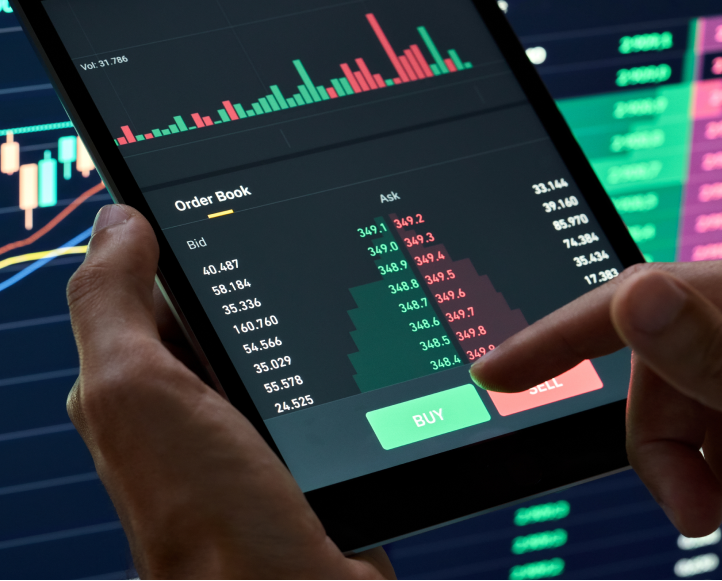
之前对三季度美股保持非常谨慎的态度,股指也的确没有冲上新高。然而9月过半,美股股指却坚韧且富有弹性,尽管AI板块没能再度力挽狂澜拉动股指冲高,7巨头近几个月的股价都比较挣扎,但目前我们看到的,是美股没有持续回调,随着时间推移,美股若能熬过三季度,届时降息节奏开启,大选落地,隐隐有种感觉,市场或将迎来一轮牛市,在圣诞行情布局机会到来时,或许是大家沉稳控制仓位数月后进场的最好时间节点。当然,这一切还有些距离,首先美股需要迎接本周的货币政策转向大考。免责声明:GO Markets 分析师或外部发言人提供的信息基于其独立分析或个人经验。所表达的观点或交易风格仅代表其个人;并不代表 GO Markets 的观点或立场联系方式:墨尔本 03 8658 0603悉尼 02 9188 0418中国地区(中文) 400 120 8537中国地区(英文) +248 4 671 903作者:
Xavier Zhang | GO Markets 高级分析师


热门话题
苹果公司(Apple Inc.,股票代码AAPL)近期的股价走势引发了广泛的市场讨论。作为全球最具市值的科技公司之一,苹果公司一直以来都是投资者的宠儿。然而,随着9月10日新款iPhone的发布,市场对于苹果未来表现的看法出现了一定的分歧。在新机发布的同时,苹果公司却遭遇了一系列挑战,包括输掉与欧盟的法律争斗、税款补缴,Apple Intelligence功能上线不及预期以及围绕这段时间以来与腾讯关于微信小游戏“苹果税”的争议。今天我们将综合这些因素,分析苹果股票的近期趋势及未来可能的走向。

首先,苹果公司在9月10日发布了最新款的iPhone系列。然而,与以往不同的是,这次新品发布并未能激起市场预期的强烈反响。原因之一是苹果在新品中引入的Apple Intelligence功能,其核心技术被市场寄予厚望,然而,该功能的完全实现和应用却未能如期到来,仍需等到后续更新逐步上线,而作为苹果手机的主力消费市场,国行版iPhone可能要等到明年才能等到Apple Intelligence的上线。这种新品推出上市却并未达到消费者预期的情况往往会影响投资者的信心。其次,苹果在与欧盟的法律争斗中落败,被判需补缴144亿美元的税款。这一判决无疑加重了苹果的财务负担。欧盟指控苹果在爱尔兰享受了非法的税收优惠,违反了欧盟的竞争法。虽然苹果表示将继续上诉,但这一裁决为公司带来的潜在财务风险和声誉损失已经显现。税务问题始终是跨国科技公司所面临的最大挑战之一,苹果的这一挫败也使得市场对于苹果股票失去了一部分信心。

除了法律和财务问题外,苹果公司还面临着与腾讯之间关于微信小游戏“苹果税”的持续争议。苹果公司自2017年起开始对所有通过App Store销售的应用内购收取30%的佣金,这也是苹果公司占比不小的一部分收入,而这一策略被称为“苹果税”。尽管现在双方有意进行谈判和妥协,但这一争议仍然是苹果与中国市场之间的一个关键博弈点。苹果与微信小游戏的抽成问题不仅关系到苹果在中国市场的营收,还涉及到其全球商业模式的可持续性。市场对于苹果能否妥善处理这一问题的疑虑,进一步加剧了股票的不确定性。从历史来看,苹果股票在新产品发布后的表现通常会经历短期的波动。过往几年,新款iPhone发布后,苹果股价多为下跌,而今年也不出意外,发布会结束后,盘中跌幅一度扩大到1%,尽管当天美股收盘时有0.04%的涨幅,但是截止到周二美股收盘还是下跌了0.3%,但是根据往年的情况预测,随后股价会因市场情绪和预期的消化,出现一定幅度的调整,并在随后几周到几个月的时间内逐渐回调上涨,并且在长达一年的时间范围内,通常表现较为强劲,而韦德布什也在9.10好将苹果的目标价从285美元上调到了300美元,这说明市场即使在短期内因为不确定性和负面新闻而产生波动,但总体对苹果的长期发展依然看好。
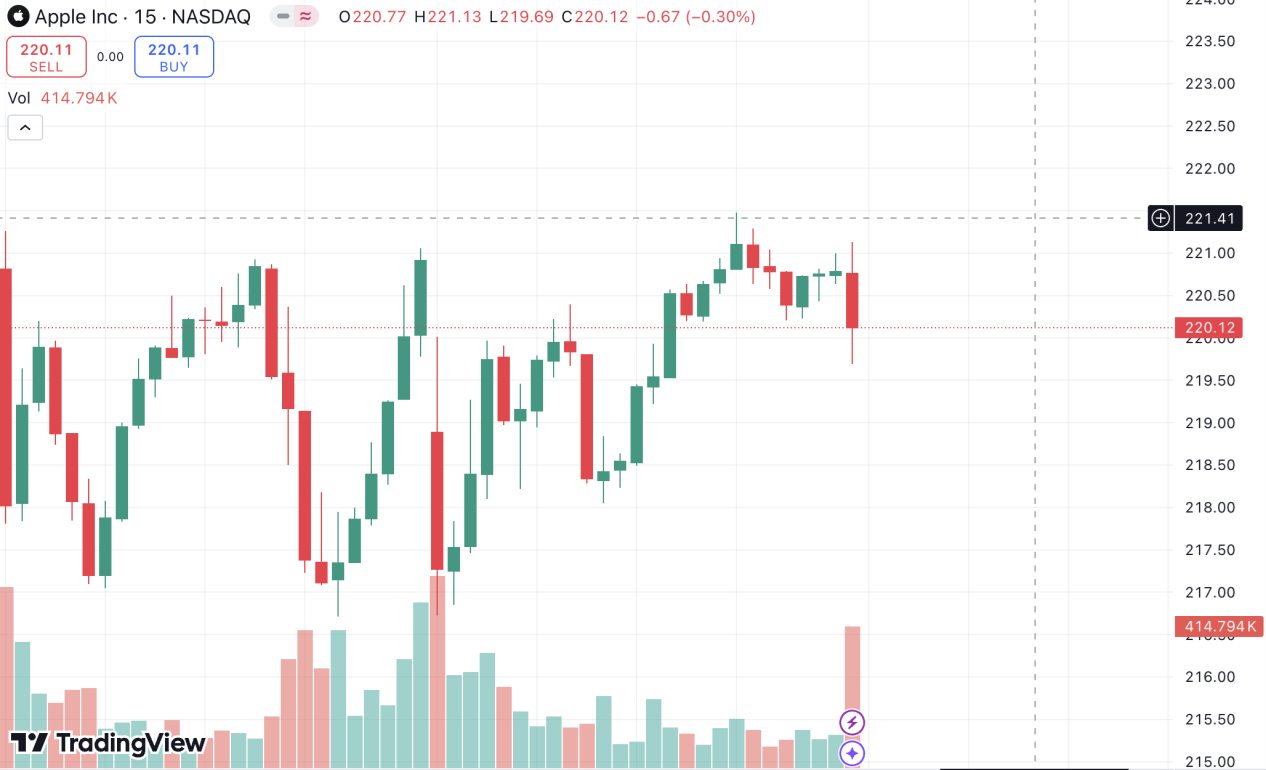
目前,市场对苹果的未来走势存在较大的分歧。一方面,苹果在多个领域的技术创新和市场领先地位仍然不容忽视,其庞大的用户基础和生态系统带来的稳定营收依然是投资者看好的主要原因;另一方面,面对全球法律环境的变化、竞争对手的步步紧逼以及创新速度放缓的担忧,苹果需要在新一轮科技革命中展现出更强的领导力。值得注意的是,美联储的货币政策变化也可能影响苹果的股价表现,一般来讲科技公司通常在低利率环境下表现较好,因此可能需要进一步关注美联储九月的降息决策,因为宏观经济环境的变化也是影响苹果股价的重要因素。综上所述,苹果公司近期的股价走势受到多种因素的共同影响,包括新品发布的市场反应不佳、法律争端的财务压力、新功能的交付延迟以及全球市场政策环境的不确定性。投资者在评估苹果股票时,需要综合考虑这些短期挑战与长期潜力的平衡。尽管苹果的短期股价可能面临一定的波动,但凭借其在科技创新和市场战略方面的持续优势,更多人还是相信长期来看,苹果依旧是一只有着强劲潜力的股票,也将在未来继续在全球科技行业中扮演引领者的角色。免责声明:GO Markets 分析师或外部发言人提供的信息基于其独立分析或个人经验。所表达的观点或交易风格仅代表其个人;并不代表 GO Markets 的观点或立场联系方式:墨尔本 03 8658 0603悉尼 02 9188 0418中国地区(中文) 400 120 8537中国地区(英文) +248 4 671 903作者:
Yoyo Ma | GO Markets 墨尔本中文部
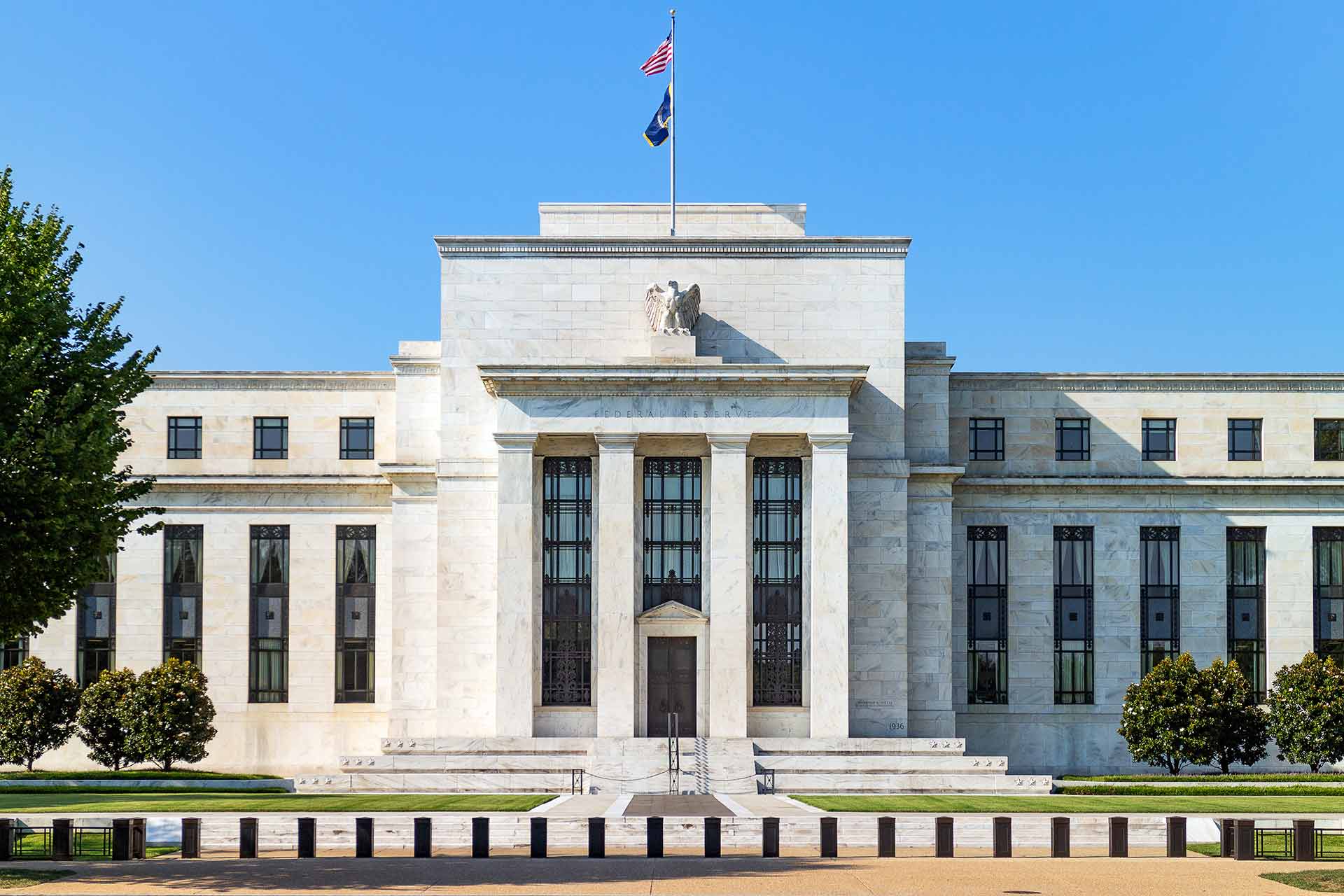

Slowing Growth and Potential Rate Cuts: Recent economic data suggests a slowdown in growth, contrary to earlier expectations of reaccelerating growth and inflation. Federal Reserve Chairman Jerome Powell's statements and recent economic indicators point towards the possibility of lower policy rates in the near future. Key indicators, such as the softening in job markets and overall economic activity, indicate that growth is decelerating rather than accelerating.
Core inflation remains above the Fed's target but is showing signs of a gradual decline, with core CPI at 0.29% month-over-month (MoM) in April. This trend could build the Fed's confidence that inflation is on a downward trajectory, potentially leading to rate cuts starting in July. These data trends have filtered into in the market itself.
The divergence between the S&P and US 2-year has been come very apparent as yields unwind from their hawkish bets that ramped up on Q1 data. That spread is becoming an interesting trade – it could close as fast as it has opened if data misses. On the data – what is core to the Fed’s view?
Inflation Trends: Core inflation remains elevated but shows signs of slowing. The April core CPI increase of 0.29% MoM aligns with the Fed's expectations of gradual inflation decline. The slow but steady decrease in shelter prices, particularly the owner’s equivalent rent (OER), is a positive sign.
However, the "supercore" non-shelter services sector's inflation is unlikely to slow significantly without a loosening of the labour market and that remains a headwind. That brings us to the next question what is the official views of the Fed? Federal Reserve Outlook: The recent Federal Open Market Committee (FOMC) minutes and statements from Fed officials suggest it still holds a cautious approach.
While there is no major shift towards a hawkish stance, the rhetoric indicates a readiness to cut rates if inflation data supports a premise it’s on a path to a more sustainable level. Yet the view from members is rather mixed, illustrated by the mixed views from members over the past week. Key Statements Vice Chair Philip Jefferson: Jefferson noted that while April's data is encouraging, it is too early to determine if the slowdown in inflation is sustainable.
He emphasized the current restrictive monetary policy and refrained from predicting when rate cuts might begin, stressing the importance of assessing incoming economic data and the balance of risks. Vice Chair of Supervision Michael Barr: Barr expressed disappointment with Q1 inflation readings, which did not increase his confidence in easing monetary policy. He reinforced the message that rate cuts are on hold until there's clear evidence that inflation will return to the 2% target.
Cleveland Fed President Loretta Mester: Mester anticipates a gradual decline in inflation this year but acknowledges that it will be slower than expected. She no longer expects three rate cuts this year and mentioned that the Fed is prepared to hold rates steady or raise them if inflation does not improve as anticipated. San Francisco Fed President Mary Daly: Daly sees no need for rate hikes but also lacks confidence that inflation is decreasing towards 2%.
She sees no urgency to cut rates, echoing the broader sentiment of caution among Fed officials. The conclusion from all this is that the Fed is still giving itself time. It’s of the view that the restrictive policy will need more time to work, suggesting a prolonged period of higher interest rates to combat inflation effectively and despite the movements in the bond market and USD.
Traders in the fed fund futures are still trading a full 50 basis points higher as of now compared to their bets at the March meeting. (Black v Blue line) Other data that matters: GDP and Consumer Spending: Despite strong GDP growth in the latter half of 2023, real GDP growth slowed significantly to 1.6% annualized in Q1 2024. Final private domestic demand was sustained primarily by consumer services spending, even as real goods spending declined. The weakening consumer spending on goods is beginning to spill over into the services sector, indicating broader consumer weakness.
Manufacturing and Investment: Data on manufacturing and business investment remains weak. Manufacturing production has stagnated, and orders for durable goods have not shown significant improvement. Residential fixed investment is also slowing, with housing starts and building permits both declining in April.
Housing Market: Existing home sales data, to be released soon, is expected to show a modest rebound from the previous month. However, ongoing weakness in the housing market, influenced by higher mortgage rates, remains a concern. Hot Copper – Too hot?
Copper has experienced significant price movements, with several key factors contributing to the recent trends in copper prices, spreads, and inventory levels. The following points provide an in-depth analysis of the forces at play: Tighter Physical Copper Market: Last week's record highs in COMEX and SHFE copper prices, alongside the COMEX-LME copper spreads indicate a very tight physical copper market. This saw the LME copper price smash a new record all-time high (above US$11,000 a tonne).
The dislocation in copper price benchmarks, such as the COMEX-LME spread, typically leads to adjustments in physical flows. However, current conditions are proving challenging, with generally low copper inventories and logistical issues. For example, traders in China are facing tight shipping schedules, making it difficult to move copper to the US.
Suggesting the price will hold in the interim De-commoditisation of Commodities: Deliverable Metal Scarcity: The elevated COMEX copper prices relative to other benchmarks can be partly attributed to the lack of deliverable metal. Only 17% of the metal in LME warehouses originates from countries with COMEX-approved brands. This scarcity of deliverable inventory means that most of the available copper cannot be used to satisfy COMEX contracts, driving up the COMEX copper premium.
RIO, BHP and the like all benefit from this. Influence of Financial Flows: Naturally this kind of move brings highten investor and trader interest. COMEX copper futures are experiencing all-time highs in long positioning and record open interest in copper options.
This surge in financial flows has pushed COMEX copper prices higher compared to other benchmarks and has been more resistant to reversal. What next? The tight inventory situation is likely to persist, especially if logistical challenges and shipping delays continue.
This will maintain upward pressure on prices and could lead to further dislocations between different copper price benchmarks. Efforts to alleviate bottlenecks will be crucial in normalizing price spreads and stabilizing the market. Any improvement in shipping schedules or inventory replenishment could ease some of the current tensions, but we do not hold our breathe for this to occur any time soon.
Conclusion The recent record highs in copper prices and spreads underscore a complex interplay of tight physical markets, and significant financial flows. Traders should closely monitor these dynamics and adapt their positions to capitalise on potential switches and further squeezes. But in the main Dr.
Copper is hot and likely to remain so until supply catches up.


The transportation of the world is becoming one of the most interesting trading places in markets as we clearly have a structural long-term change coming as the world moves from the black stuff (oil) to electricity. But the trader question is – what’s happening in these markets now? The black stuff - Oil Oil prices have softened due to several bearish factors impacting demand, inventories, and refining margins in the last few week and despite some easing of geopolitical risks, concerns remain.
Lets run through the key issues. Inventories and Demand Global Inventories: April restocking has continued into May, with a nearly 10 million barrel increase last week alone, bringing the month-to-date (MTD) build to over 17 million barrels. The US, Europe, and Japan all recorded stock builds in crude oil and refined products.
However we need to put this into perspective – total stockpiling is sit well below historical averages across all major regions. US Inventories: US crude oil inventories increased by 1.8 million barrels last week, expectations were for drawdown as we approach peak driving season. While gasoline and ethanol saw modest draws, other products experienced large stock builds – this likely comes down to demand.
Demand: US oil demand remains weak on a four-week moving average (4WMA) basis, though there was a slight uptick in weekly gasoline demand. However, this needs to be consistent to impact overall demand positively. Couple that with the fact International Energy Agency (IEA) has revised its 2024 oil demand growth forecast down to 1.07 million barrels per day (b/d), a decrease of 0.14 million b/d.
This slower growth trajectory is expected to continue into 2025, with demand growth predicted to decelerate to 0.7 million b/d. Prices positioning Price Activity: Money managers have been liquidating net long positions in crude oil, with ratios of gross longs to gross shorts for Brent and WTI significantly declining. This reflects a bearish outlook the but speculative bearish view has closed to a holding pattern.
The Outlook: Pricing and forecasting suggest a continued decline in prices, with Brent expected to average $86 per barrel in Q2 2024, but dropping to the $70s in the second half of the year and into the $60s by 2025. WTI is expected to average $82 per barrel in Q2 2024 then $66 by year end and as low as $51 by the end of 2025. Refining Margins and Seasonal Factors Refining Margins: Geopolitical risks and seasonal factors like summer heat and potential hurricanes pose upside risks for refinery margins in the near term.
However, the overall trend is towards weakening fundamentals and thus further margin squeezes. Seasonal Demand: With the Memorial Day weekend approaching, traditionally the start of the US driving season, there is hope for increased gasoline demand. However the longer term demand trend for gasoline remains soft as explained.
This remains uncertain and dependent on consistent weekly data. Other Factors Technical Support: Given the bearish fundamentals and the current positioning, technical support for oil prices appears weak. Options market data show declining interest and implied volatility has softened as the match lower has become more ordered.
Overall, the oil market is facing bearish pressures from high inventories, weak demand indicators, and reduced speculative interest, with only limited near-term upside risks. The focus remains on potential demand increases during the summer driving season and any unexpected geopolitical developments that could disrupt supply. The elephant in the room as ever remains OPEC.
With its 27% control of global oil markets further cuts to supply that have taken effect over the past 24 month will only get bigger. The Battery Stuff - Lithium Before we dive into the lithium story in depth, we need to first dive into the geopolitical impacts on the market and their effects on not just price but future developments. Let us review the impact the Inflation Reduction Act (IRA) is having on the lithium Supply Chain The IRA is attempting to reduce dependence on China for electric vehicle (EV) battery production by incentivising the sourcing of critical minerals, such as lithium, from Free Trade Agreement (FTA) countries and non-Foreign Entities of Concern (non-FEoC) supply chains.
Here are some of the additional parts of the IRA that are augmenting the market EV Tax Credit: tax credit of up to $7,500 for EVs, with half of this ($3,750) contingent on sourcing critical minerals (like lithium) from countries with which the U.S. has a Free Trade Agreement (FTA), - Australia, South Korea, and Chile. 45X Tax Credit: Lithium chemical producers benefit from a 10% production tax credit applied to all operating expenses (opex), significantly supporting their operations and potentially lowering costs. The thing is – China has shown it is still the most efficient player in developing, manufacturing and producing EVs’. That however hasn’t stopped the Biden Administration ploughing on with the IRA.
China currently dominates the downstream EV battery production market, controlling around 80% of gigafactory production. However, China’s upstream control of raw minerals is limited to about 17% of the global supply. By incentivising the sourcing of lithium and other critical minerals from FTA countries, the IRA aims to diversify and secure the supply chain away from Chinese dominance.
However, this immediately puts a price premium in ex-China sources as it incentivises and realistically forces firms to seek FTA and non-FEOC so they comply with the IRA. There is also an argument that Independence Group (IGO) for example used the IRA as rationale for the Kwinana downstream project as the pricing of the project was partially based on ex-China price premiums. A price premium of $3,000 per ton for lithium hydroxide (LiOH) could make projects with higher capex but lower internal rates of return (IRR) financially viable.
The flip side. The strict IRA rules E for the tax credit may result in fewer EVs meeting the criteria, as they must source a significant portion of their battery components from specified countries. This could reduce the number of qualifying EVs in the market, influencing manufacturers to adapt their supply chains to meet the new standards.
In short, the ex-China price premium is likely to increase, reflecting the growing demand for compliant minerals. This strategic move is expected to have significant implications for the global EV market and the positioning of the United States within it.
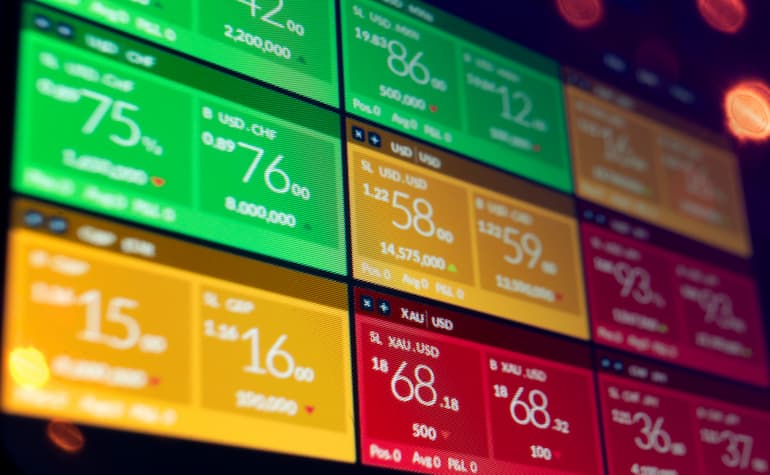

The recent USD decline stalled in yesterday’s session with FX traders seemingly taking the view that there is not enough thrust from US data to justify a significantly weaker USD just yet. Aside from the inflation aspect – and markets may have reacted a bit too optimistically to the CPI and PPI – jobless claims also eased back yesterday to 222k after a jump to 232k one week ago, mirroring the January reading where they reached 225k but then dropped back to the 200-210k area. GBP under pressure EURGBP has come off its 0.8610 peak in the past couple of sessions with a strong equity market benefitting the more cyclical and risk sensitive Pound Sterling.
At the same time, volatility in the pair seems to be abating ahead of the key CPI figures in the UK next week. Risks are skewed to the dovish side for the Bank of England, and a move higher in EURGBP is a good chance as traders increase their bets on a June rate cut. Today, the key event for GBP traders is a speech by the BoE’s Catherine Mann, who is considered the MPC’s most hawkish member.
Yesterday, Megan Greene echoed the recent cautious optimism on inflation expressed by Governor Andrew Bailey at the latest meeting.

